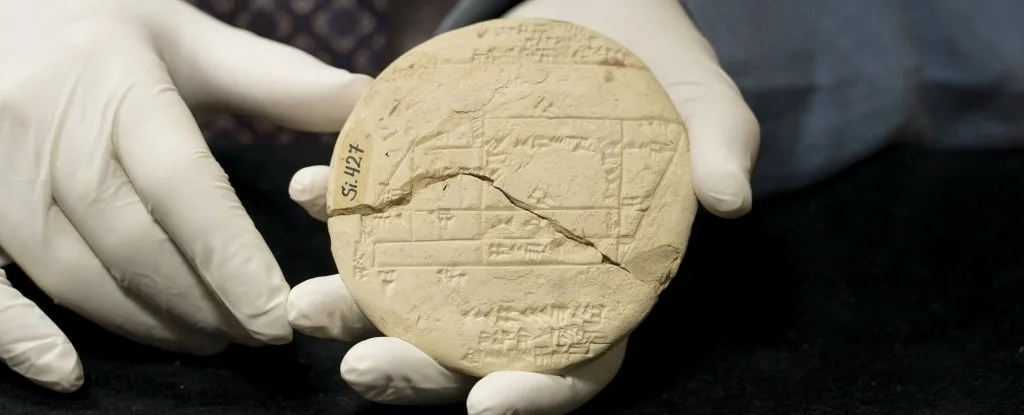A clay tablet dating back 3,700 years to the Old Babylonian period has been identified as containing the oldest known instance of applied geometry. This significant discovery was made by an Australian mathematician. The clay tablet predates the birth of Pythagoras by over a millennium.
The artefact, known as Si.427, had remained largely overlooked in a museum in Istanbul for more than one hundred years.
“Si.427 dates from the Old Babylonian period, approximately between 1900 and 1600 BCE,” stated Dr Daniel Mansfield of the University of New South Wales (UNSW), Australia. “It is the only known example of a cadastral document from this era, which refers to a surveyor’s plan used to define land boundaries. In this particular case, the tablet provides both legal and geometric information regarding a field that was divided following the sale of a portion.”
The plan inscribed on the tablet uses sets of numbers referred to as Pythagorean triples to construct accurate right angles. These numerical sets align with trigonometric principles used to calculate the sides of a right-angled triangle, highlighting the tablet’s historical and mathematical importance.
Dr Mansfield’s research, detailed in a recent publication, compares Si.427 with another tablet from the same period, known as Plimpton 322. In 2017, Dr Mansfield and his colleagues identified Plimpton 322 as one of the earliest known trigonometric tables, containing a list of Pythagorean triples.
At the time, the purpose of this list was unclear. However, researchers now believe that Plimpton 322 may be slightly more recent than Si.427 and that it contains only those Pythagorean triples relevant to measuring rectangular plots of land. This suggests that the tablet served as a practical guide for land surveyors.
This function contrasts with the later Greek approach to trigonometry, which was developed by observing celestial bodies. The range of Pythagorean triples usable for land measurement in Babylonian surveying was quite limited.
A Pythagorean triple consists of three whole numbers, a, b, and c, that satisfy the equation a² + b² = c², where a and b are the lengths of the sides adjacent to the right angle and c is the hypotenuse. The simplest example is 3² + 4² = 5².
Such sets of numbers were employed to construct triangles and rectangles with exact right angles. However, the Babylonian number system, which was based on sixty rather than ten, made it difficult to use prime numbers greater than five.
“This presents a very specific challenge,” Dr Mansfield explained. “Due to the base-60 system, only certain Pythagorean configurations were usable. It seems the author of Plimpton 322 examined numerous possibilities to identify those that were practically applicable. This demonstrates a profound and highly numerical understanding of how to apply geometric principles to real-world problems. It could be described as a form of ‘proto-trigonometry’, although it differs significantly from the modern use of sine, cosine, and tangent.”
The purpose of these Pythagorean triples becomes clearer through the study of Si.427. According to Dr Mansfield, they were used to define land boundaries with precision.
“This tablet comes from a time when land ownership was becoming privatised,” he said. “People began to view land in terms of individual ownership, such as ‘my land’ and ‘your land’. As a result, it became necessary to establish accurate boundaries to maintain good relations with neighbours. That is precisely what this tablet records. A field was divided, and new boundaries were drawn.”
Other tablets from the same period illustrate the importance of this development. One example refers to a dispute concerning date palms located on the border between two properties. The matter was resolved when a local official arranged for a surveyor to intervene. Such instances demonstrate the practical need for accurate land measurement.
Although Babylonian geometry may not have reached the same level of complexity as the trigonometry later developed by the ancient Greeks, it reflects a surprisingly advanced understanding for the time. This discovery suggests that the development of mathematics was more gradual and practical than previously believed.
“No one expected that the Babylonians were employing Pythagorean triples in this way,” Dr Mansfield concluded. “Their work resembles pure mathematics, yet it was clearly inspired by the practical challenges they faced.”
